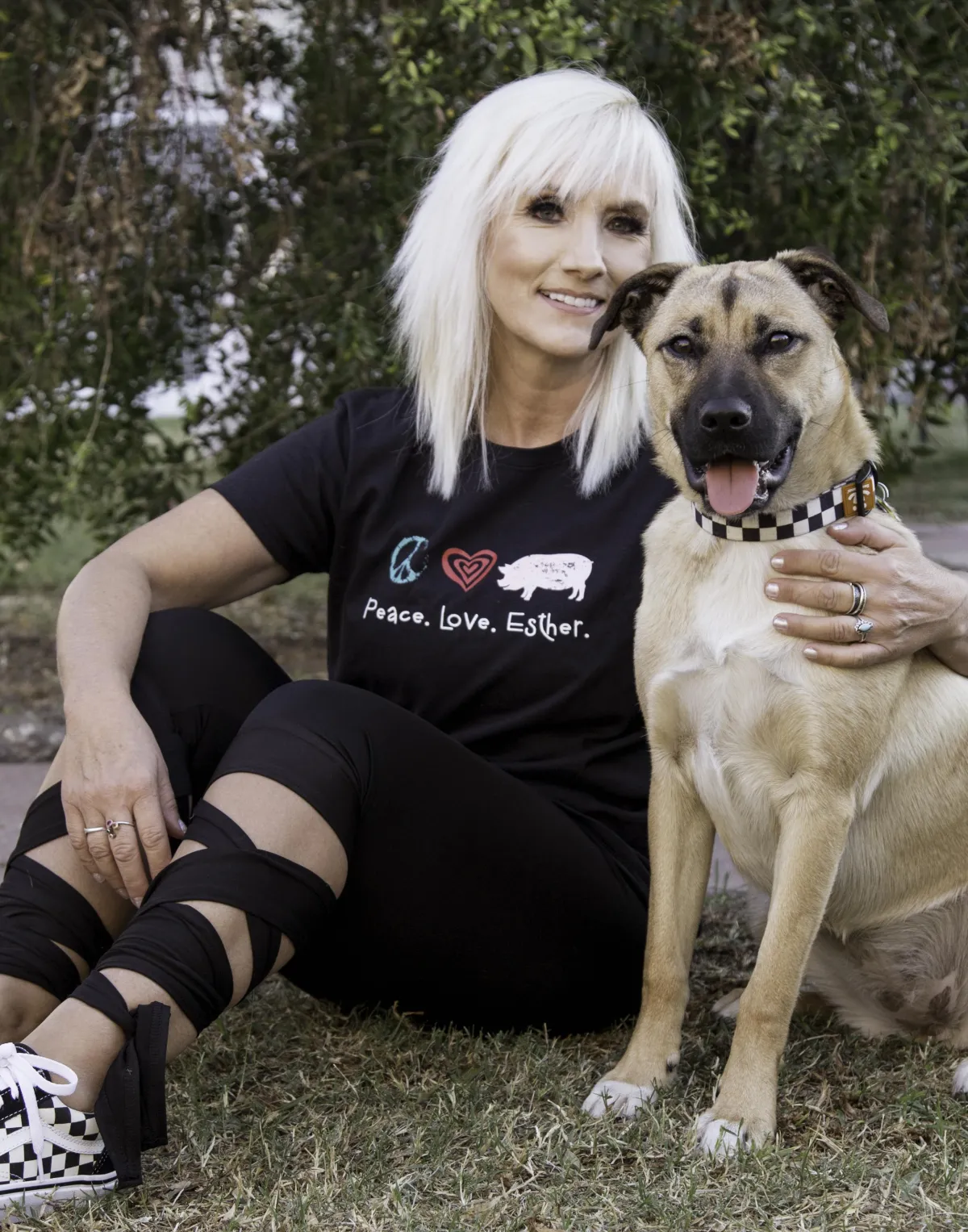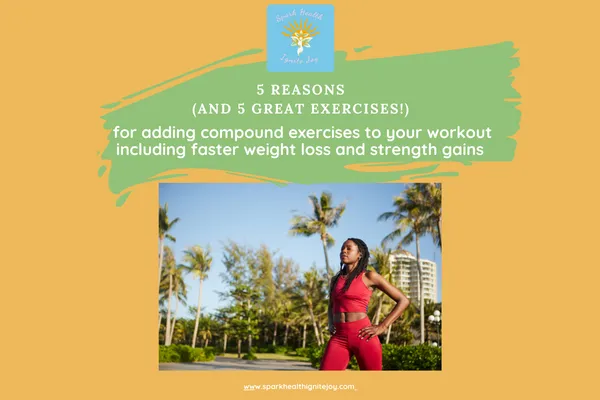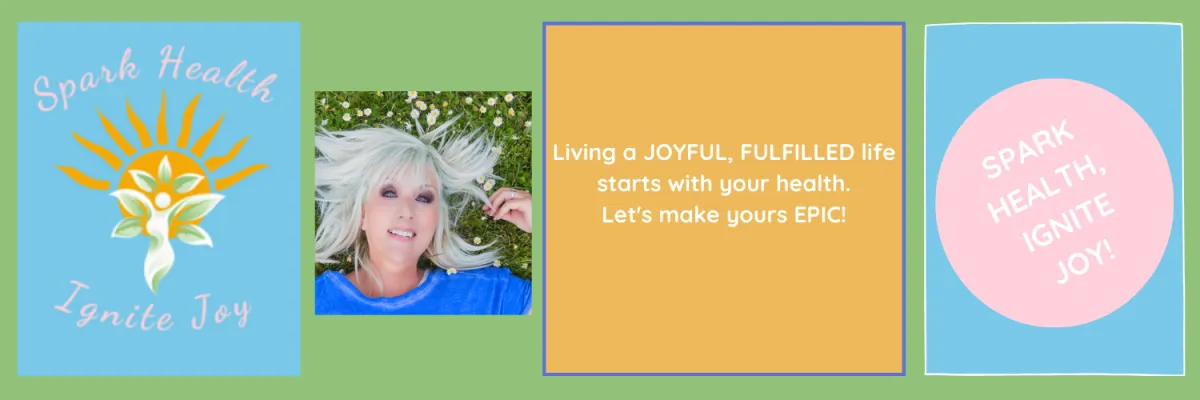Welcome to my Blog!

About the Blogger
Hi, I’m Wendy!
I’m an EXPERT in fun, joy, and living life with a “you gotta put in the hard work for what you want (but still have fun doing it!) and the rewards are SO worth it” mantra for success and getting the most out of life!
I’m a CERTIFIED EXPERT in fitness, nutrition, weight loss and coaching from a habits-based, plant-based perspective that is all about GOOD HEALTH for life.
My passion is helping people truly find and live their optimal lives through making the connections between optimal health and a joyful, fulfilled life.
Though online courses and coaching, I teach strategies for good habits, good health, and being good to yourself and others.

Compound Movements Resistance Training Exercises: what they are and how they help you get fit, lose body fat and get stronger, faster
Many people feel like they have obstacles to starting an exercise program or doing one sporadically and without a plan. Two of the most common obstacle are saying they have a lack of time and not knowing what type of exercise they really should be doing to meet their goals. This is what leads many people to hire a personal trainer—they want an expert tell them how to achieve their goals. Just like you hire an expert to help you with anything else you can’t do, or where it would take too much time to learn how to do it properly yourself.
I find that many people also want to know how to reach their fitness goals by doing the most time-efficient workouts. Some who follow a workout program they figure out on their own are missing one of the most powerful ways to get results in a more efficient way. This happens when they focus mostly on single-joint, isolation weight training with machines in the gym. Examples of this include: leg curl, biceps curl, preacher curl (biceps), quadriceps extension, wrist curl and front raise.
While single-joint, isolation exercises are an important addition to a well-rounded weight-training programs for focusing on sculpting and defining certain muscle groups, they shouldn’t be the priority for people who are looking to lose body fat (so those muscles can actually be seen!) and generally build muscle in the beginning. If you are trying to lose body fat, isolation weight training exercises simply aren’t that effective for maximizing the calorie burning effects of exercise.
If your goal is improving your overall fitness and strength level while also losing body fat, compound exercises that feature multi-joint movements involving more than a single muscle group can be extremely effective for realizing benefits from all three categories of fitness: cardiovascular, strength and flexibility. Compound exercises are exercises that work multiple muscle groups at the same time. For example, a squat is one exercise but it is considered a compound exercise because it works the quadriceps, glutes, and calves. It is not isolating just one muscle group as an isolation exercise does. Another example of a compound exercise is combining two exercises into one move to target even more muscles (for example, a lunge with a bicep curl).
Compound exercises target your large muscle groups so you also burn more calories. These exercises also help with flexibility as they involve natural movements (not just sitting on a machine working one small muscle group).
A good way to design your weight training or bodyweight training workouts is - after you do your warm-up - to start with compound exercises first, then finish off your workouts with some isolation exercises.
Here are five benefits of compound exercises, along with suggested exercises to help you experience the maximum benefits from a limited amount of exercise time.
1. Compound exercises burn more calories: the body expends 5 calories of energy to consumer 1 liter of oxygen. Exercises that involve more muscle tissue require more oxygen, which helps the body increase its net energy expenditure.
2. Compound exercises improve inter-muscular coordination: this is the function and timing of multiple muscles around a joint or joints. An example is the gluteal complex (gluteus maximus, medius and minimus), which is responsible for controlling motion of the hip. Compound exercises such as squats, lunges or steps that move the hips in all three planes can improve how all of the muscles work together to produce and control force. This kind of exercise can be of particular benefit to those who play sports and need acceleration as well as strength.
3. Compound exercises elevate the heart rate and provide a cardiovascular training benefit: The purpose of cardiovascular exercise is to improve the ability of the heart to function as a pump. This can be accomplished through activities such as running and cycling, or by doing exercises that involve a significant amount of muscle tissue. Sitting in a leg-extension machine doing knee extensions or performing biceps curls with dumbbells uses only a limited amount of muscle tissue. Isolation exercises are more appropriate for focusing on isolated strength in the later part of your workout. Squats to shoulder presses, medicine ball chops or burpees are all examples of compound exercises that involve large amounts of muscle tissue, which challenges the heart to pump blood to keep the muscles fueled and active.
4. Compound exercises are a form of dynamic flexibility: When most people think of flexibility they picture static stretching. While holding a muscle in a lengthened position can be effective for reducing tension in a muscle, it also reduces neurologic activity, which is not recommended prior to dynamic activity. Any exercise that involves an active range of motion can be considered a form of dynamic stretching, which involves moving a joint through a range of motion to lengthen the surrounding tissue. As muscles on one side of a joint contract, the muscles on the opposite side have to lengthen to allow contraction to occur. Over the course of a number of repetitions, the contractions and activity in the involved muscles elevate the temperature and inhibit activity, which reduces tension and improves length. It is beneficial to incorporate both types of flexibility exercises into your workouts and day.
5. Compound exercises improve movement efficiency: People who are heavy-duty body builders, with that being their only form of exercise, often move almost robotically. This is because training only one muscle group at a time does not teach multiple muscle groups to coordinate their contractions and firing rates, which is how muscles actually contract. Compound exercises that involve large groups of muscles teach the muscles how to coordinate the firing of the motor units responsible for timing muscle contractions. Compound exercises can actually help you improve your natural movement skills and dynamic balance, which can actually help improve overall quality of your life in terms of things like reaching and bending (natural movements) and also improve your ability to do the activities you like to do outside of workouts.
Here is a sample workout comprised of compound exercises that can help your clients experience the benefits of using multiple muscle groups at the same time.
Deadlifts:
Stand with barbell on floor, feet hip-width apart, toes under bar. Drive your hips back, keeping your core tight and your spine neutral as you squat down. Your back should remain flat, not curved. Grasp the bar with your hands. Your hands should be placed on the bar slightly wider than your thighs. Keep knees soft and push through your heels as you start to lift. Pull the bar up so your hips and the bar rise at the same time, keeping bar close to your body as you lift. Finish in a tall stance with a glutes squeeze at the top. Slowly lower the bar to the ground while hinging at the hips. Perform 10 to 12 reps and rest for at least 30 to 60 seconds between sets. Work up to 3 sets.
Dumbbell Thrusters (squat to shoulder press):
Stand with feet shoulder-width apart and hold one dumbbell in each hand so the dumbbells are in front of each shoulder with the palms facing each other. Sink into the hips to perform a squat; at the bottom, press both feet into the ground to move to a standing position. Press both arms overhead while keeping the palms facing each other. Coordinate the moves so that the weight is lowered while sinking into the squat and the weights are pressed overhead once a standing position is reached. Complete 10 to 12 repetitions and rest 60 to 90 seconds; complete two to three sets.
Renegade Rows:
Start in a push-up position with the hands holding on to dumbbells that are lined up parallel to each other. Perform a push-up. At the top of the push-up, press both feet into the ground to create stability while pulling the right dumbbell up to the chest in a rowing move (the elbow brushes against the rib cage). Place the right hand down and perform a rowing move with the left hand.
Once a row has been completed on each side, perform another push-up. Complete as many as possible with good form and rest 45 to 60 seconds; complete two to three sets.
Reverse Lunge to Balance With Biceps Curls:
Stand with feet hip-width apart while holding one dumbbell in each hand so they are hanging next to the body with the palms facing the body. Step backward with the right foot and lower the hips. Push the left foot into the ground and bring the right foot forward to return to standing. At the top, stay balanced on the left leg (don’t let the right foot touch the ground) and perform a biceps curl with both arms. Complete six to eight reps on one leg before switching to the other side. Rest 60 to 90 seconds after performing repetitions on both legs; complete two to three sets.
Front Lunge with a Twist:
Stand up tall with feet shoulder-width apart and with your arms outstretched in front of you. Step the right foot forward into a lunge position, keeping your arms outstretched. Your front leg should form a 90-degree angle and your knee should not extend beyond your toes. Your back leg will also form a 90-degree angle. In the lunge position, twist your upper body to the right, then twist back to the center. Return right leg to starting position and lunge forward to repeat movement with the left leg. Perform 8 to 10 lunges on each leg. Work up to 3 sets.
Fitness Spark!: Try incorporating some or all of these moves into your workout at the beginning, after your warm-up!

Sign up here for my newsletter for tips on nutrition, fitness, healthy habits and wellness to Spark Health, Ignite Joy!



Facebook
Instagram
X
LinkedIn
Pinterest